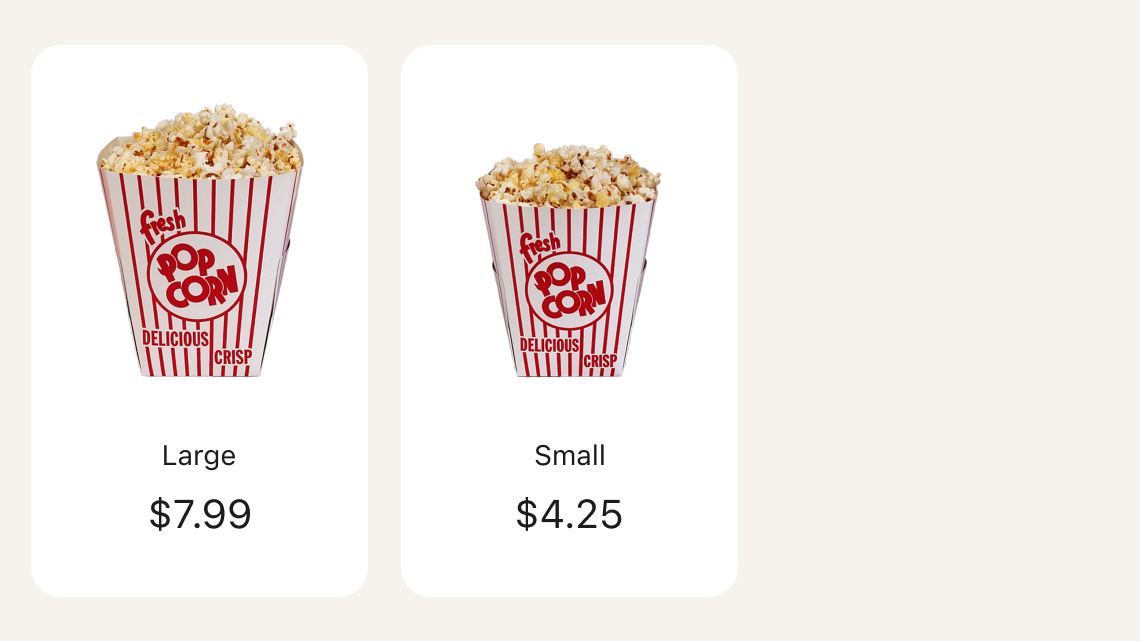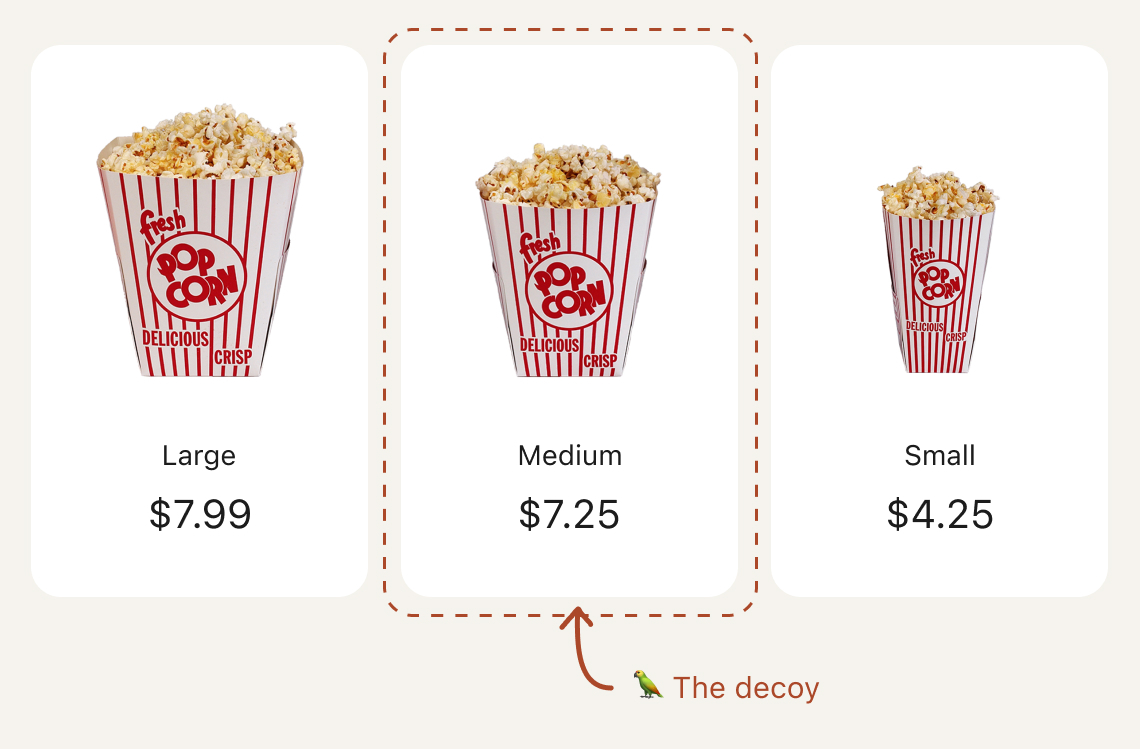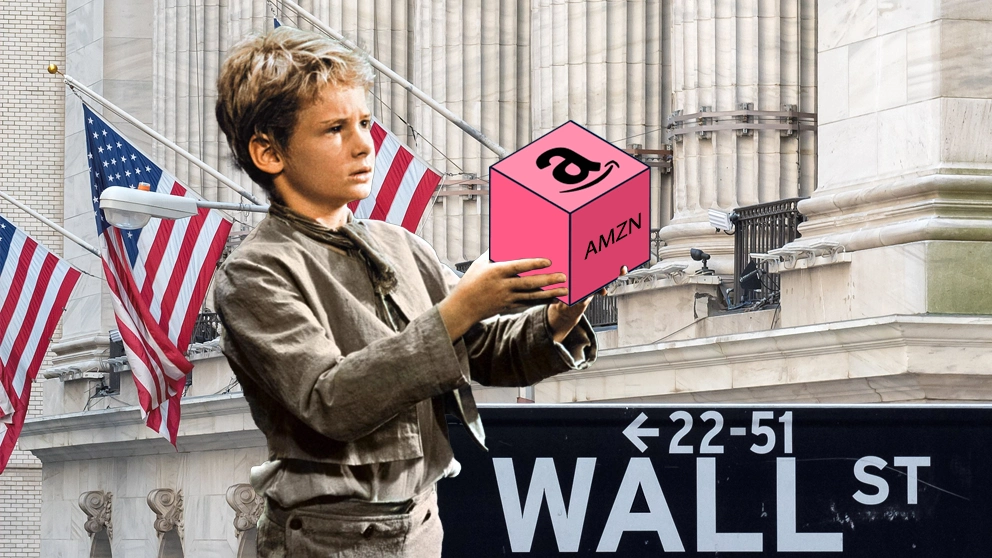🦜
The Decoy Effect
An 'objectively-unsuitable' option will change the value proposition for the others.
👀
Introduction
Although we like to imagine that we make decisions in a totally rational vacuum of 'value for money', we don't.
We broadly make decisions based on comparative values, based on the choices available.
Some companies will knowingly create an 'objectively-unsuitable' package (or tier), with the sole purpose of making the other options feel like better value for money.
It's called a decoy, because very few people are expected to actually buy it.
Take an abstract popcorn example:

Popcorn is expensive, and you may find yourself opting for the 'Small' bucket. $8 feels like a lot to spend on popcorn.
But the presence of the 'Medium' tier, makes the 'Large' feels like better value for money.

The 'popcorn per dollar' value of the small option hasn't changed, but customers may be more likely to spend more money at the cinema.
That’s theory, now learn about how to implement this.
BFM+
For product builders
- Impacts of The Decoy Effect
- Product tips (i.e., what you should do now)
- Related UX bites for more examples


